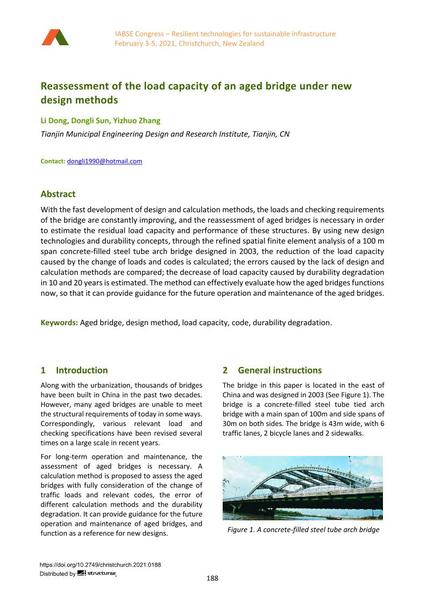Reassessment of the load capacity of an aged bridge under new design methods

|
|
|||||||||||
Détails bibliographiques
| Auteur(s): |
Li Dong
(Tianjin Municipal Engineering Design and Research Institute, Tianjin, CN)
Dongli Sun (Tianjin Municipal Engineering Design and Research Institute, Tianjin, CN) Yizhuo Zhang (Tianjin Municipal Engineering Design and Research Institute, Tianjin, CN) |
||||
|---|---|---|---|---|---|
| Médium: | papier de conférence | ||||
| Langue(s): | anglais | ||||
| Conférence: | IABSE Congress: Resilient technologies for sustainable infrastructure, Christchurch, New Zealand, 3-5 February 2021 | ||||
| Publié dans: | IABSE Congress Christchurch 2020 | ||||
|
|||||
| Page(s): | 188-196 | ||||
| Nombre total de pages (du PDF): | 9 | ||||
| DOI: | 10.2749/christchurch.2021.0188 | ||||
| Abstrait: |
With the fast development of design and calculation methods, the loads and checking requirements of the bridge are constantly improving, and the reassessment of aged bridges is necessary in order to estimate the residual load capacity and performance of these structures. By using new design technologies and durability concepts, through the refined spatial finite element analysis of a 100 m span concrete-filled steel tube arch bridge designed in 2003, the reduction of the load capacity caused by the change of loads and codes is calculated; the errors caused by the lack of design and calculation methods are compared; the decrease of load capacity caused by durability degradation in 10 and 20 years is estimated. The method can effectively evaluate how the aged bridges functions now, so that it can provide guidance for the future operation and maintenance of the aged bridges. |
||||
